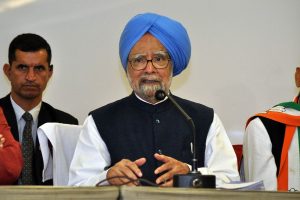Blended finance, both as an innovative approach and practice, is lately gaining currency as an emerging tool for development financing in the developing countries where financing needs are acute. According to the OECD (2017) definition, “blended finance is the strategic use of development finance for the mobilisation of additional finance towards sustainable development in developing countries”. The strategy is to attract commercial capital to projects that contribute to sustainable development while providing financial returns to private investors. Many see blended finance as a new departure in development finance to leverage private funding for public utilities, traditionally seen purely as the government’s responsibility.
According to an assessment by the government of Nepal, the annual average development financing gap in Nepal towards achieving the sustainable development goals (SDGs) by 2030 would be about $17.70 billion, which in aggregate would account for approximately 50 per cent of the national GDP for the period leading up to 2030. Given due ambience to implement it, blended finance can undoubtedly help bridge this gap in Nepal’s development finance and business development. The classical blended finance approach aims to bring in commercial or private capital to blend it with public equities, development assistance from development partners, and lately, other private investors. The three key characteristics of blended finance are concessionality, additionality and addressing the financing needs of the “missing middle”. Concessionality enables the end-users of products and services of “blended” projects to enjoy concessional costs, and additionality is the goal which could not have been achieved without the blended intervention. It aims to cater to middle-sized investments that are covered neither by large profit-oriented investors like banks nor by small ticket-sized, often publicly incentivised, investments. Of course, a decade-long practice of blended finance has given rise to a variety of new offshoots of investment models. In the case of Nepal, for all practical purposes, development finance is essentially understood to be analogous to microfinance. Nevertheless, several studies have realistically evaluated Nepal’s prospects of promoting the blended nature of the financing. Nepal has lately presented an example of “private sector only” blended finance, which is a departure even at the conceptual level in that the experiment proved to be a success without equity participation by the public sector. The Covid-19 pandemic-induced lockdowns have had a severe economic impact, particularly on Nepal’s micro, small and medium enterprises (MSME). Meanwhile, a blended finance programme called The Co- vid-19 MSME Fund Nepal was launched in October 2020 with the objective of supporting pandemic impacted MSMEs. It leveraged grant support from the Swiss Agency for Development and Cooperation and FMO, the Dutch Entrepreneurial Development Bank. The fund embodied the critical principle of blended finance; concessionality by providing interest or collateral-free loans to meet the working capital needs of businesses, and additionality through technical assistance in the form of business development services. Yet, it took an important departure that deserves to be called the “only private sector” blending model. It was entirely managed by a private fund managed company, One to Watch, which did not involve the domestic public sector in equity and management, and instead of the missing middle segment, it focused on the “left out bottom” segment of MSMEs.
Advertisement











